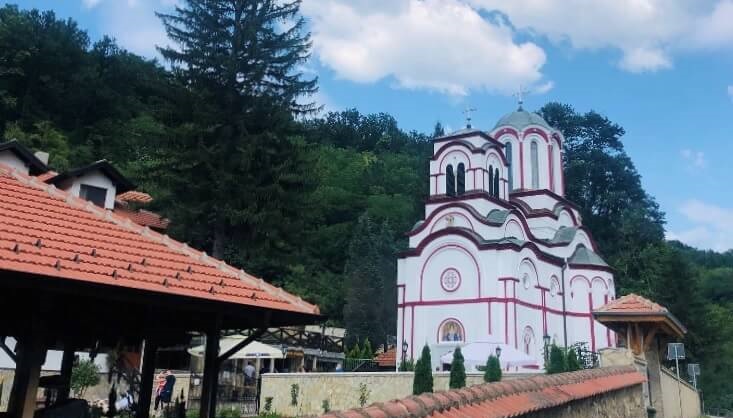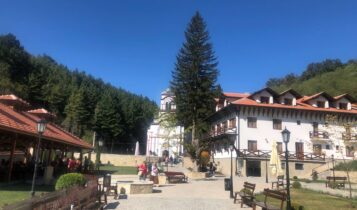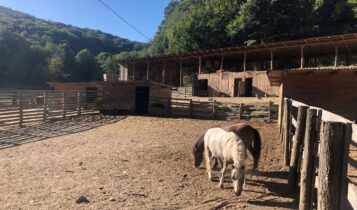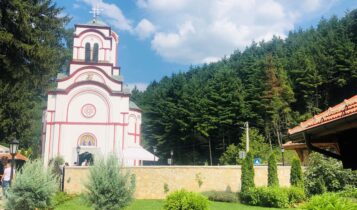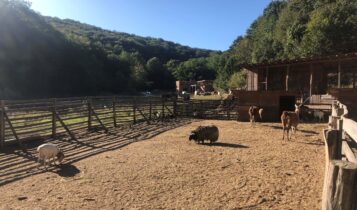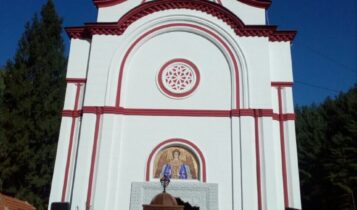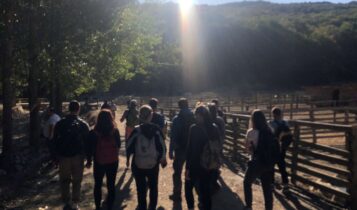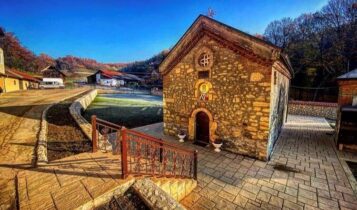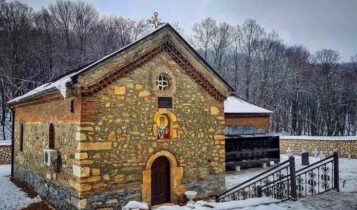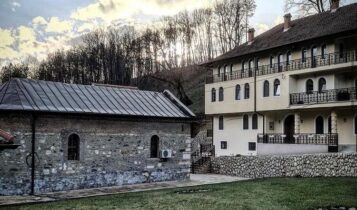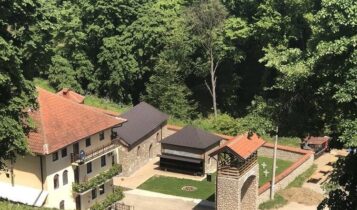In the meeting of the monastery, which annually visits about a million believers, famous for healing, near the miraculous relics of St. Zosimus and St. James, which happen daily according to the faith of the prayer-makers!
Dates in 2024. age: 18. February / 17. March / 14.April / 26. May / 30. June / 21. August / 22. September / 20. October / 17. November / 24. December
TRAVEL PROGRAM:
05: 30 departure from Kraljevo (organized departures from Cacak, Gornji Milanovac and Uzice)
09: 00 attending the Holy Liturgy
After the liturgy, giving gifts to the relics of the Holy miracles of James and Zosim and attending the reading of prayers for health. In the following we visit the souvenir shop from which we head to the Printing House of St. Zosimus (a short walk).
About 15: 00 planned departure for Nimnik monastery
16: 00 visit to the Monastery of Nimnik and if possible spiritual talks with the abbot of the monastery father Elisey
18: 00 scheduled departure for the King
Arrival in the evening
There are no certain testimonies about the origin and name of the Tumana monastery, all of them appear quite late (XIX century) and constitute a basically written and forgotten oral tradition. If we rely on the national memory that is alive to this day in the wider surroundings of the monastery, Tuman was created as an endowment of the Kosovo hero Miloš Obilić, who is considered to have lived and ruled part of today's Braničevo. Before the Battle Of Kosovo, the monastery had not yet been completed, so the Holy Prince Lazar invited his nobleman to stop the construction of the shrine with the words "Tu Mani" from which the name of the monastery was derived. Somewhat wider than this, the tradition tells us that Milos Obilic hunted in the thick forests around the monastery, and that he inadvertently wounded the hermit saint Zosimus in the hunt. Carrying the ascetic to his court to try to save his life and reconnoitre his wound, in the place where the monastery is now, the Saint begged to be lowered and exclaimed to Milos: "here Mani and let me die" – which, as in the previous version of the tradition, served as the basis for the name of the monastery.
What is indisputable is that the establishment of the Tumana Monastery is inextricably linked to the Venerable Zosimas of Sinai, and that a holy family was formed at the site of his asceticism or around his grave immediately after his death. This possibility is indicated by Božidar Kovačević in his work "Venci knezu Lazaru i Ravanica", who states the possibility that the name of the Tumana Monastery is derived from the Greek word "timvos" (lat. tumulus), which means grave, or burial mound.
In any case, the name of the monastery has survived the centuries and has been preserved to this day, as has the memory of the Holy Ascetic Zosimas, to whom the afflicted have been rushing from many directions for centuries, seeking a cure and spiritual comfort.
There is a legend associated with the name of the monastery Nimnik. According to the story, in this area during the Turkish rule lived a girl who refused to show the Turkish soldiers the way to the monastery, knowing that the Ottomans were probably looking for a church to burn it down. When asked where the monastery was located, the girl replied "nišćem nimik" (meaning "I don't know anything"), to which the Turks responded with violence and cut the child in place. To this day on her grave stands one of the two chapels of this monastery named The Shrine. The monastery was built by a certain Bogosav, who was reportedly one of the Dukes of Prince Lazar and who is considered to be the same Bogosav mentioned in the folk song "Knez Bogosav and Starina Novak".
Price: 3.000, 00 din.
The arrangement includes
- Transport by tourist bus (air conditioning, audio-video equipment) on the indicated route,
- Professional guide services,
- Organizational costs.
General conditions
- The arrangement was made on the basis of 35 payments,
- The agency reserves the right to cancel the arrangement no later than 7 days before the scheduled departure,
- General travel conditions apply for travel.
Notes
- Please enter the monasteries decently dressed, for women it is recommended to wear a skirt and scarf, and men long pants and long sleeves,
- Take food throughout the trip

